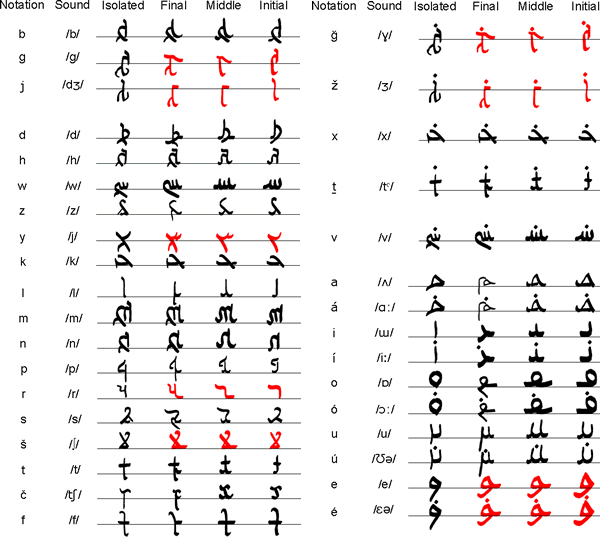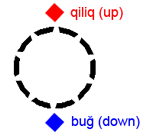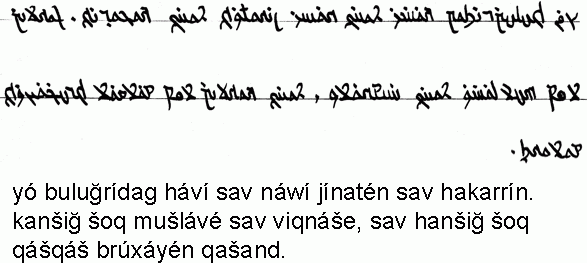![]()
The Bulughman alphabet was invented by TJ to write his conlang of the same name. The conlang is spoken by nomadic people that live on a hypothetical world on the eastern boundaries where they met Alexander, a conquestador, who taught them how to write their own language and communicate.

The dots are used to change the sounds of some letters; Qiliq (above) changes the sounds of some letters to something else as shown in the charts. Bugh (below) is a mark of stress (double letters).

The numbers are written from right to left as well and as they are said. Eg. 1980 becomes 0891.


Listen to this textndfiles/udhr/udhr_bulughman.mp3&autostart=no&loop=no&random=no&remote=no&debug=no">
If you have any questions about the Bulughman alphabet, you can contact TJ at: lonelytj@hotmail.com
Ayvarith, Betenic, Bulughman, Zimúrán
Constructed scripts for: Ainu | Arabic | Chinese languages | Dutch | English | Hawaiian | Hungarian | Japanese | Korean | Lingala | Malay & Indonesian | Persian | Tagalog / Filipino | Russian | Sanskrit | Spanish | Taino | Turkish | Vietnamese | Welsh | Other natural languages | Colour-based scripts | Tactile scripts | Phonetic/universal scripts | Constructed scripts for constructed languages | Adaptations of existing alphabets | Fictional alphabets | Magical alphabets | A-Z index | How to submit a constructed script
[top]
You can support this site by Buying Me A Coffee, and if you like what you see on this page, you can use the buttons below to share it with people you know.

If you like this site and find it useful, you can support it by making a donation via PayPal or Patreon, or by contributing in other ways. Omniglot is how I make my living.
Note: all links on this site to Amazon.com, Amazon.co.uk
and Amazon.fr
are affiliate links. This means I earn a commission if you click on any of them and buy something. So by clicking on these links you can help to support this site.
[top]